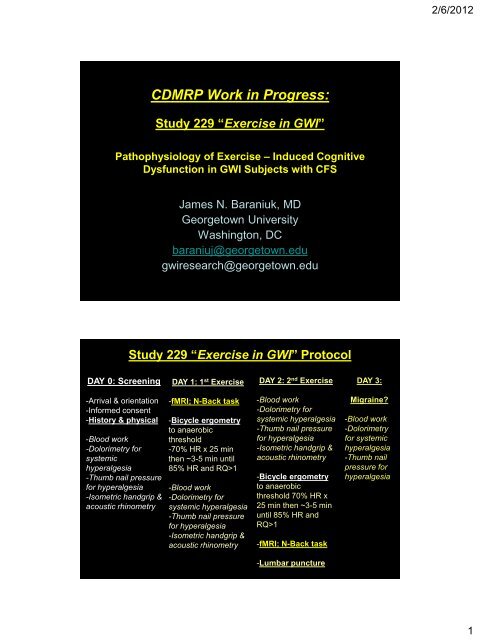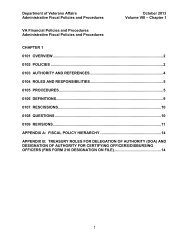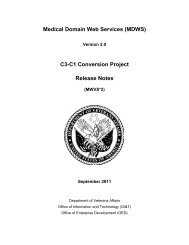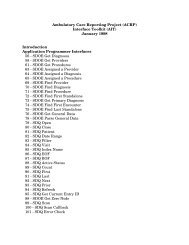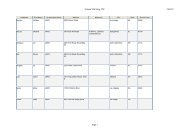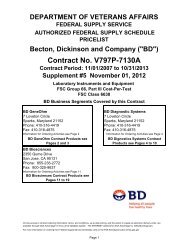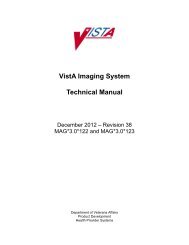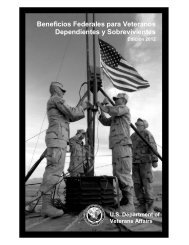fMRI of N-Back Task
fMRI of N-Back Task
fMRI of N-Back Task
You also want an ePaper? Increase the reach of your titles
YUMPU automatically turns print PDFs into web optimized ePapers that Google loves.
CDMRP Work in Progress:<br />
Study 229 “Exercise in GWI”<br />
Pathophysiology <strong>of</strong> Exercise – Induced Cognitive<br />
Dysfunction in GWI Subjects with CFS<br />
DAY 0: Screening<br />
-Arrival & orientation<br />
-Informed consent<br />
-History & physical<br />
-Blood work<br />
-Dolorimetry for<br />
systemic<br />
hyperalgesia<br />
-Thumb nail pressure<br />
for hyperalgesia<br />
-Isometric handgrip &<br />
acoustic rhinometry<br />
James N. Baraniuk, MD<br />
Georgetown University<br />
Washington, DC<br />
baraniuj@georgetown.edu<br />
gwiresearch@georgetown.edu<br />
Study 229 “Exercise in GWI” Protocol<br />
DAY 1: 1 st Exercise<br />
-<strong>fMRI</strong>; N-<strong>Back</strong> task<br />
-Bicycle ergometry<br />
to anaerobic<br />
threshold<br />
-70% HR x 25 min<br />
then ~3-5 min until<br />
85% HR and RQ>1<br />
-Blood work<br />
-Dolorimetry for<br />
systemic hyperalgesia<br />
-Thumb nail pressure<br />
for hyperalgesia<br />
-Isometric handgrip &<br />
acoustic rhinometry<br />
DAY 2: 2 nd Exercise<br />
-Blood work<br />
-Dolorimetry for<br />
systemic hyperalgesia<br />
-Thumb nail pressure<br />
for hyperalgesia<br />
-Isometric handgrip &<br />
acoustic rhinometry<br />
-Bicycle ergometry<br />
to anaerobic<br />
threshold 70% HR x<br />
25 min then ~3-5 min<br />
until 85% HR and<br />
RQ>1<br />
-<strong>fMRI</strong>; N-<strong>Back</strong> task<br />
-Lumbar puncture<br />
DAY 3:<br />
Migraine?<br />
-Blood work<br />
-Dolorimetry<br />
for systemic<br />
hyperalgesia<br />
-Thumb nail<br />
pressure for<br />
hyperalgesia<br />
2/6/2012<br />
1
• Healthy veterans<br />
Fatigue in GWI<br />
• GWI (which definition?)<br />
• GWI + CFS<br />
• How severe are the fatigue and fatigue –<br />
related symptoms?<br />
Score Severity <strong>of</strong><br />
-Fatigue<br />
PLUS<br />
8 Ancillary Criteria<br />
- Concentration or<br />
memory problems<br />
- Sleep disturbances<br />
- Headache<br />
- Sore throat<br />
- Sore lymph nodes<br />
- Muscle pain<br />
- Joint pain<br />
- Exertional exhaustion<br />
Scale<br />
0 = none<br />
1 = trivial<br />
2 = mild<br />
3 = moderate<br />
4 = severe<br />
CFS Severity Score (n=600 HC & CFS)<br />
Sum <strong>of</strong> 8<br />
2/6/2012<br />
2
Score Severity <strong>of</strong><br />
-Fatigue<br />
PLUS<br />
8 Ancillary Criteria<br />
- Concentration or<br />
memory problems<br />
- Sleep disturbances<br />
- Headache<br />
- Sore throat<br />
- Sore lymph nodes<br />
- Muscle pain<br />
- Joint pain<br />
- Exertional exhaustion<br />
Scale<br />
0 = none<br />
1 = trivial<br />
2 = mild<br />
3 = moderate<br />
4 = severe<br />
Sum <strong>of</strong> 8<br />
CFS Severity Score (n=600)<br />
- Sum8 correlates with Fatigue.<br />
- Fatigue scores <strong>of</strong> 3 or 4 plus the threshold <strong>of</strong> 14 distinguishes<br />
CFS from Chronic Idiopathic Fatigue (CIF), CFS-Like With<br />
Insufficient Fatigue Syndrome (CFSLWIFS) and HC.<br />
Pain and Tenderness:<br />
Nociception, Systemic Hyperalgesia and Allodynia<br />
• Mechanisms <strong>of</strong> central sensitization.<br />
• Dorsal horn <strong>of</strong> the spinal cord.<br />
• Primary synapse between peripheral pain-carrying Type C<br />
neurons and ascending spinothalamic neurons.<br />
• Long term loss <strong>of</strong> descending anti-nociceptive aminergic<br />
nerve function (decreased norepinephrine, serotonin and<br />
dopamine to dorsal horn) promotes more pain input.<br />
• Loss <strong>of</strong> norepinephrine release that ascends from the<br />
brainstem locus coeruleus to the cortex:<br />
– This system regulates acute responses to stressors by altering<br />
analysis <strong>of</strong> sensory and interoceptive inputs, focus <strong>of</strong> attention,<br />
mood (fear) and “efferent” autonomic, neuroendocrine, and<br />
executive decision making processes. The neural connections<br />
are related to the “default mode pathway” that is active during<br />
rest.<br />
2/6/2012<br />
3
Systemic Pressure Threshold (kg)<br />
Systemic Pressure Threshold (kg)<br />
14<br />
12<br />
10<br />
8<br />
6<br />
4<br />
2<br />
0<br />
M+CFS<br />
M+HC<br />
F+CFS<br />
F+HC<br />
10 20 30 40 50 60 70 80 90<br />
Age (yr)<br />
Dolorimetry<br />
- Pressure was applied with a strain<br />
gauge over the 18 traditional American<br />
College <strong>of</strong> Rheumatology tender points.<br />
- Averages were plotted against age for:<br />
- males with CFS (M+CFS, grey stars),<br />
- male controls (x M+HC),<br />
- female CFS (F+CFS, closed Δ) and<br />
- female controls (F+HC, open Δ )<br />
(n=893).<br />
- Explained variances were
Systemic Pressure Threshold (kg)<br />
14<br />
12<br />
10<br />
8<br />
6<br />
4<br />
2<br />
0<br />
Dolorimetry: Pressure-Induced Pain Thresholds<br />
M+CFS<br />
M+HC<br />
F+CFS<br />
F+HC<br />
10 20 30 40 50 60 70 80 90<br />
Age (yr)<br />
Dolorimetry<br />
- Pressure was applied with a strain<br />
gauge over the 18 traditional American<br />
College <strong>of</strong> Rheumatology tender points.<br />
- Averages were plotted against age for:<br />
- males with CFS (M+CFS, grey stars),<br />
- male controls (x M+HC),<br />
- female CFS (F+CFS, closed Δ) and<br />
- female controls (F+HC, open Δ )<br />
(n=893).<br />
- Explained variances were
Digital Dolorimetry:<br />
Thumbsmashing to Test Exercise – Induced Changes<br />
in Spinal Cord Dorsal Horn Fuction and<br />
Central Sensitization<br />
Apply random<br />
pressures and<br />
score pain level<br />
(20 point Gracely<br />
Box Score).<br />
Measure the slope<br />
<strong>of</strong> the pain vs.<br />
pressure curve.<br />
Digital Dolorimetry:<br />
Thumbsmashing to Test Exercise – Induced Changes<br />
in Spinal Cord Dorsal Horn Fuction and<br />
Central Sensitization<br />
Apply random<br />
pressures and<br />
score pain level<br />
(20 point Gracely<br />
Box Score).<br />
Measure the slope<br />
<strong>of</strong> the pain vs.<br />
pressure curve.<br />
- The slopes <strong>of</strong> the pain vs.<br />
pressure curves (horizontal<br />
lines) before exercise were<br />
higher for GWI than HC (blue<br />
line; “more sensitive”).<br />
- Exercise normalized the<br />
responses in GWI (pink) and<br />
had no effect in HC (gold).<br />
2/6/2012<br />
6
Digital Dolorimetry:<br />
Thumbsmashing to Test Exercise – Induced Changes in<br />
Spinal Cord Dorsal Horn Fuction and<br />
Central Sensitization<br />
Data under evaluation<br />
Cognition & Working Memory:<br />
N-<strong>Back</strong> Testing Paradigm<br />
In the <strong>fMRI</strong> scanner,<br />
- focus on the screen,<br />
- identify the letter,<br />
- process the information,<br />
- store the information in short term working memory (posterior parietal<br />
lobe), and<br />
- plan the proper finger movements for the response (prefrontal and<br />
frontal executive decision making and motor regions).<br />
Stimulus Shown on Screen A D C C A B D B<br />
Button Response 0-<strong>Back</strong> � A D C C A B D B<br />
Button Response 2-<strong>Back</strong> � - - A D C C A B<br />
Score test accuracy at % correct answers.<br />
Compare DAY 1 (pre-exercise) to DAY 2 (post-exercise) % Accuracy.<br />
2/6/2012<br />
7
2-<strong>Back</strong> Accuracy (%)<br />
2-<strong>Back</strong> Accuracy (%)<br />
100<br />
80<br />
60<br />
40<br />
20<br />
0<br />
100<br />
80<br />
60<br />
40<br />
20<br />
0<br />
HC/HVet<br />
GWI only<br />
GWI+CFS Increasers<br />
GWI+CFS Decreasers<br />
DAY 1 DAY2 DAY 1 DAY 2<br />
Controls GWI+CFS<br />
HC/HVet<br />
GWI only<br />
GWI+CFS Increasers<br />
GWI+CFS Decreasers<br />
DAY 1 DAY2 DAY 1 DAY 2<br />
Controls GWI+CFS<br />
p
Group<br />
Exercise – Induced Changes in Cognitive<br />
Function (2-<strong>Back</strong> % accuracy) in GWI/CFS<br />
N<br />
Mean %Δ [95% C.I.]<br />
HC/HVet/GWI 10 3.0% [-6.9% to 12.8%]<br />
GWI+CFS Increasers 13 52.3% [21.5% to 83.1%] *<br />
GWI+CFS Decreasers 16 -25.8% [-40.9% to -10.8%] * **<br />
The percent changes in 2-back accuracy after the exercise protocol<br />
were calculated as ((DAY 2)-(DAY1))/(DAY 1).<br />
* p = 0.015 vs. HC/HVet/GWI, and ** p=0.00006 between Increasers<br />
and Decreasers by 2-tailed unpaired Student’s t-tests after significant<br />
ANOVA (p=0.00002).<br />
<strong>fMRI</strong> <strong>of</strong> N-<strong>Back</strong> <strong>Task</strong><br />
Presentation terminated because <strong>of</strong> insufficient <strong>of</strong> time available<br />
before the end <strong>of</strong> the meeting.<br />
2/6/2012<br />
9
Thank you to:<br />
VA GWI RAC<br />
CDMRP<br />
Denise Nichols<br />
Murugan Ravindran, Samantha Merck,<br />
Yin Zheng, Christian Timbol, Rania Esteitie<br />
Megna Raskit, John VanMeter<br />
Georgetown – Howard Universities CTSA<br />
and especially to<br />
all <strong>of</strong> our participants for teaching us what is going on.<br />
Collaborate with us:<br />
baraniuj@georgetown.edu<br />
gwiresearch@georgetown.edu<br />
2/6/2012<br />
10


